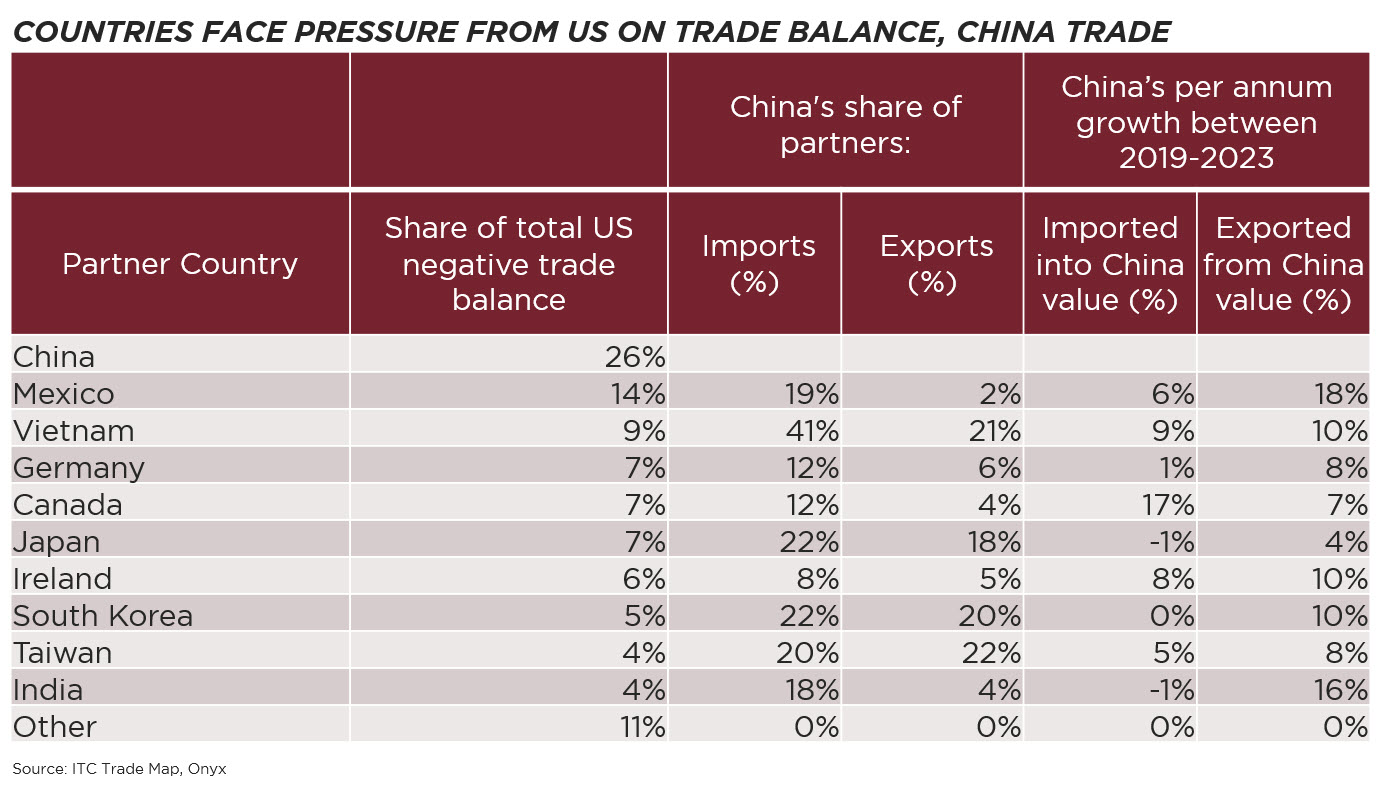
Search our articles
The world has changed. Have Trump’s goals changed along with it?

Key Insights:
- What is happening: President-elect Donald Trump’s win set off significant speculation in policy spheres around the world and statements from officials on their likely stances in a negotiation over tariffs proposed on the campaign trail. Despite a large amount of coverage and discussion of Trump’s trade positions, he has been vague on specifics and has put forward a variety of goals for his trade agenda.
- Why it matters: Trump’s demonstrated desire to intertwine US economic and national security takes on a new character in a world punctuated by geopolitical conflict. Geopolitical context is likely to be a much stronger force in shaping negotiations in the next Trump administration than in his first. Companies and supply chains are caught in the middle.
- What happens next: Appointments to key positions will continue to provide clues as to the most important priorities of a Trump administration and potential avenues for cooperation where there is any to be had. Negotiating strategies, key goals, and the sequencing of events will continue to be clarified over the coming months as countries seek to highlight their strengths and find places of compromise.
ANALYSIS
During his campaign, Trump outlined several policy objectives that he believes tariffs can achieve. These include reducing the US trade deficit, encouraging investment within the US, and reducing reliance on China in key strategic industries. As preparations for negotiations kick into high gear, policy makers around the world are trying to parse the goals of the Trump administration and what types of concessions it may be seeking.
The first Trump administration showed a willingness to reach a compromise with agreements on export quotas and purchase agreements that would reduce the trade deficit or protect strategic industries like auto and steel. But the administration’s goals with China and Mexico were clearly quite different. With China, the Trump administration sought more significant economic reforms and left 301 tariffs in place to maintain pressure in anticipation of further negotiations. Mexico, on the other hand, faced significant tariff pressure to address the Trump administration’s concerns on immigration.

“Since Trump left office in 2020, many simmering tensions have exploded onto the international stage.”
—
In past negotiations, Trump was explicit in tying economic and national security together, often using coercive economics and security guarantees to reach his end goals. Since Trump left office in 2020, many simmering tensions have exploded onto the international stage. The Russian invasion of Ukraine, a growing consensus on US-China relations, and a growing conflict in the Middle East are just a few of the concerns that have changed the global environment for negotiations.
As countries consider their negotiating position, escalating tensions between global powers are bringing the role of China in their economies into stark light. The unknown at this point is where this falls on the Trump administration’s list of priorities, but there are indications that curbing China’s role in the manufacture of US products is a significant focus. Key roles such as national security advisor and secretary of state have be filled by Mike Waltz and Marco Rubio, respectively. Both have argued forcefully for US disentanglement with China, a rival they view as dangerous. This has shown through most clearly in Trump’s focus on Chinese investments and trade flows to Mexico. Policy circles in the EU have taken notice and have raised the possibility of additional cooperation on trade from China as a potential point of negotiation.

Topics: North America, China, Europe, Trade

Written by Onyx Strategic Insights

